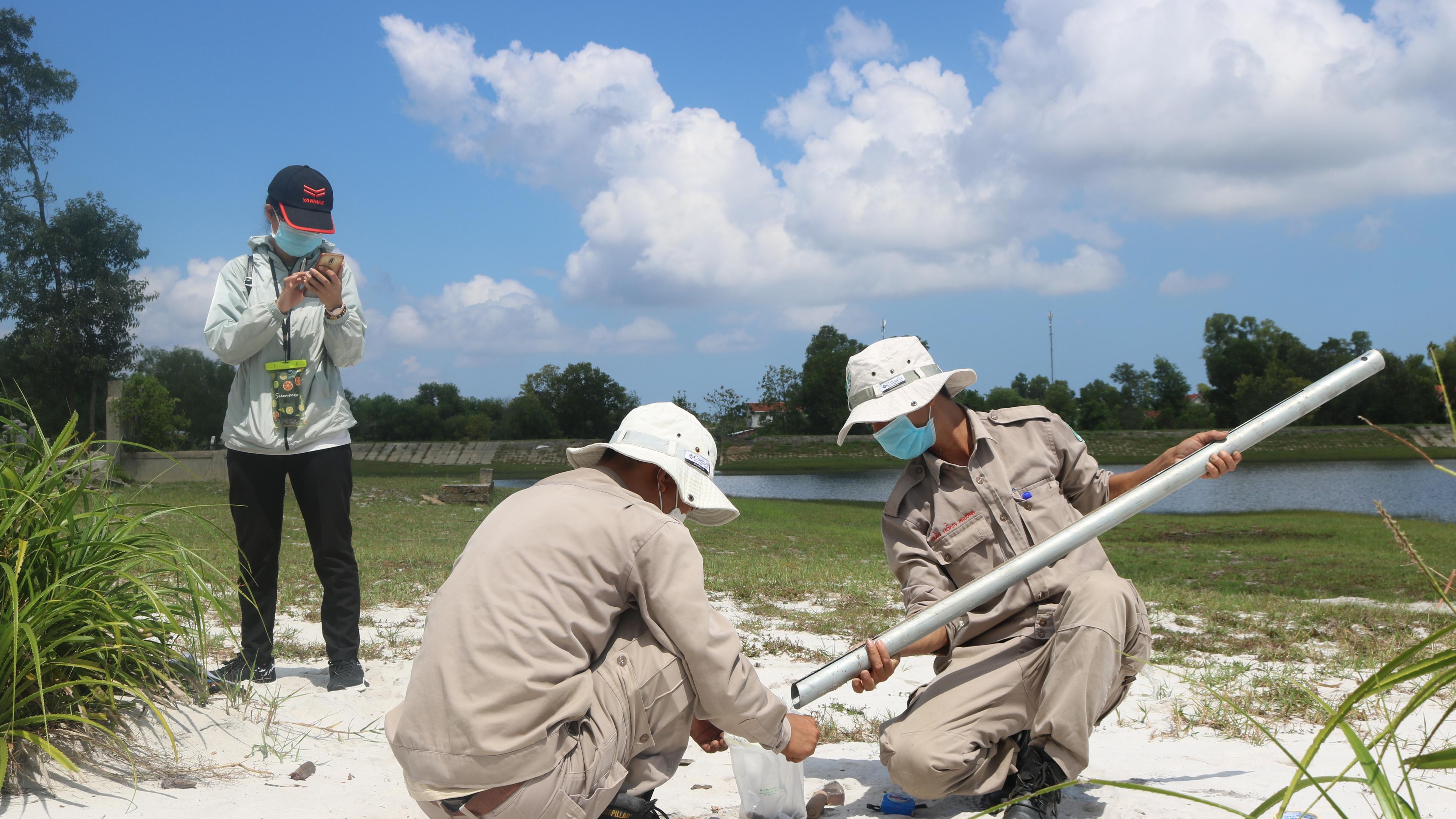Rapid soil tests to protect civilians and livelihoods
 © Norwegian People's Aid Vietnam
© Norwegian People's Aid VietnamWhat is the challenge?
The removal of landmines is done through a process called Land Release. This is done in three stages, namely: non-technical survey (NTS); technical survey (TS) and clearance. NPA conducts NTS by collecting historical data on battles, geolocating evidence such as past accidents, interviewing community members and where possible interviewing former combatants. This is used to map landmine contaminated areas, sometimes with the help of drones. Since this information is often incomplete, sample clearance is done with the use of metal detectors, dogs and machines to more accurately map contamination. Once these areas are more accurately identified, NPA conducts full clearance to find and remove all threats in an area, which are typically destroyed on-site. Once the land is made safe, it is handed back over to local communities. However, the land release process is also time-consuming; as the vast majority of areas mapped by NTS do not actually contain threats. Having tools to identify evidence can make NTS more accurate, thereby making clearance faster and more efficient.
Despite the removal of landmines, threats to civilians may still remain due to residual chemical contamination from explosives and other environmental pollution from conflict. This may prohibit agriculture, threaten livelihoods or have long-lasting effects on health and ecosystems if chemical contaminants from conflict pollution are found in high enough concentrations.
Burning and detonation of explosives have the potential to pollute soil, surface water and groundwater with contaminants. Contaminants from explosives residues include heavy metals (antimony, arsenic, barium, beryllium, boron, cadmium, chromium, copper, lead, mercury, nickel, selenium, uranium, vanadium, zinc), hydrocarbons (fuel oil, diesel, petrol), and other inorganics (phosphorus, ammonium, cyanide, nitrates, sulphates). Land and water contamination may also already be present within conflict-affected areas due to targeting of industrial and military sites, dumping of waste and damaged infrastructure. This may present a risk to the wider community long after a conflict has ended.
What is innovative about the project?
There is a need to rapidly test for chemical contaminants in soil before, during and after mine action activities. Currently, commercially available off-the-shelf solutions such as strip-based reagent tests provide very limited information on the range of common chemical contaminants from explosive residue. In particular, these systems are not able to provide the range of information necessary to quickly and accurately determine whether land is safe to use for agriculture after clearance of landmines. More comprehensive sampling requires further analysis in a laboratory, which is extremely cost-prohibitive and requires extensive expertise and training to conduct. Thus, the project aims to:
• Develop and/or adapt low cost, high repeatability and user-friendly rapid explosive residue tests to determine levels of toxicity harmful to humans.
• Integrate these systems with geo-referencing functionality to enable quick cross-referencing to determine whether harmful effects still remain in previously cleared areas.
• Explore if these systems can be used to further assist in increasing efficiency during NTS by more accurately identifying evidence of explosive contamination in suspected minefields.
What are the expected outcomes?
- Identify if areas cleared of landmines have chemical residue contamination at levels harmful to human health and ecosystems, and help develop interventions in response.
- Identify if cleared areas are safe for agriculture and wildlife, and create preconditions for livelihoods interventions.
- Facilitate more responsive civilian and environmental protection by applying tools to more efficiently, rapidly and safely clear landmines.
- Facilitate broader adoption of the tools developed by this project in the mine action sector as well as the broader humanitarian sector.
Who are the project partners?
Through needs assessments, market dialogue and innovative procurement, NPA will identify partners to develop and produce solutions that address the identified challenges.